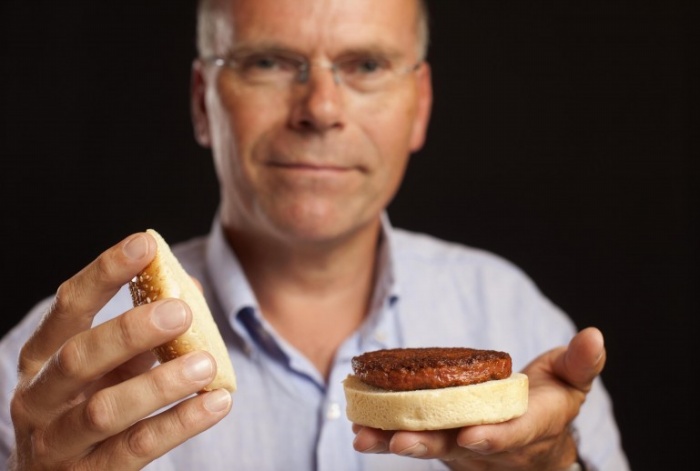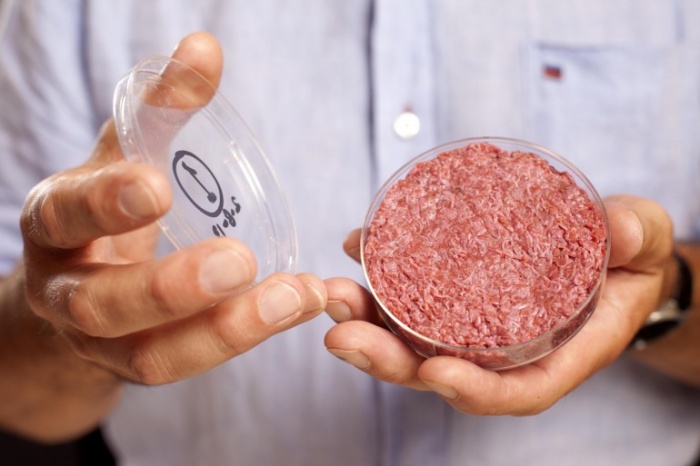
It’s been three long years without much in the way of rains in Texas. The area is the center of the beef cattle industry. The US is king in matters of beef provision and that too on a worldwide basis...

The burger above is still, essentially, beef. However, it’s not meat from the cows you see out in the pasture; rather, it’s meat that’s been cultured in a Petri dish in a lab. The beef was “grown” by Professor Mark Post and his team at the Maastricht University. Their goal was to develop a humane way to meet the world’s ever-growing meat demands without over-taxing natural resources.
To produce one pound of meat, 2,400 gallons or so of water is required. It’s a more energy-intensive process than, say, cultivating crops, so it requires so much more fossil fuel for a smaller output. Cultured meat is Post’s solution to this, and many people think it’s actually a good idea–including Google’s co-founder Sergey Brin.

In fact, Brin was among those who funded Post’s project.
So how is the meat cultured? Muscle tissues of cows from organic farms were first obtained. These tissues were separated into single cells and allowed to grow in a nutrient solution. The cells multiplied, merged, and formed strands that were about 0.3mm long. According to the researchers, 20,000 of these strands are needed to make a 5-oz. burger.
The first public tasting of the cultured burger was done recently, which was described by one of the tasters as having a “very bland, neutral flavor.”
Personally, I prefer regular burgers–and burgers I can afford, because the one Post and his team made apparently cost $330,000! They’ll probably be able to get costs down in due time, but will there be actual demand for this cultured meat? What do you think?
VIA [ C|NET ]
I love burgers and I love steaks. I love vegetables (some of them) and I love the environment. Unfortunately, you can’t really love all of them at once (with the exception of veggies) because raising cattle is extremely taxing on the environment.
With the goal of producing beef that doesn’t entirely come from cows (yes, perplexing, isn’t it?), Professor Mark Post and his colleagues of Maastricht University set to work.
 The results of their research has resulted in the first public tasting of a lab-grown burger that cost $330,000(USD) to make.
The results of their research has resulted in the first public tasting of a lab-grown burger that cost $330,000(USD) to make.
Post explains: “That we are trying today is important because I hope it will show cultured beef has the answers to major problems that the world faces. Our burger is made from muscle cells taken from a cow. We haven’t altered them in any way. For it to succeed it has to look, feel and hopefully taste like the real thing.”
So how the meat cultured? Muscle tissues were first taken from cows on an organic farm. These were then cultured in a nutrient solution, where they multiplied to form strands. Over 20,000 of these strands were collected to make a 5-oz burger.

The cultured burger was prepared by chef Richard McGeown. Among the tasters were Chicago-based author Josh Schonwald and Austrian food researcher Hanni Rützle.
On the burger, Schonwald commented: “The burger had a very bland, neutral flavor. The thing that made it most similar to real beef was the texture. When I bit into it, I was impressed with the bite and how it had a kind of density that was familiar.”

Post explains that it might take ten more years or so before cultured meat makes its way onto consumer’s plates.
What do you think? Would you take a bite of cultured meat or will you only eat the real thing?
[via Gizmag]